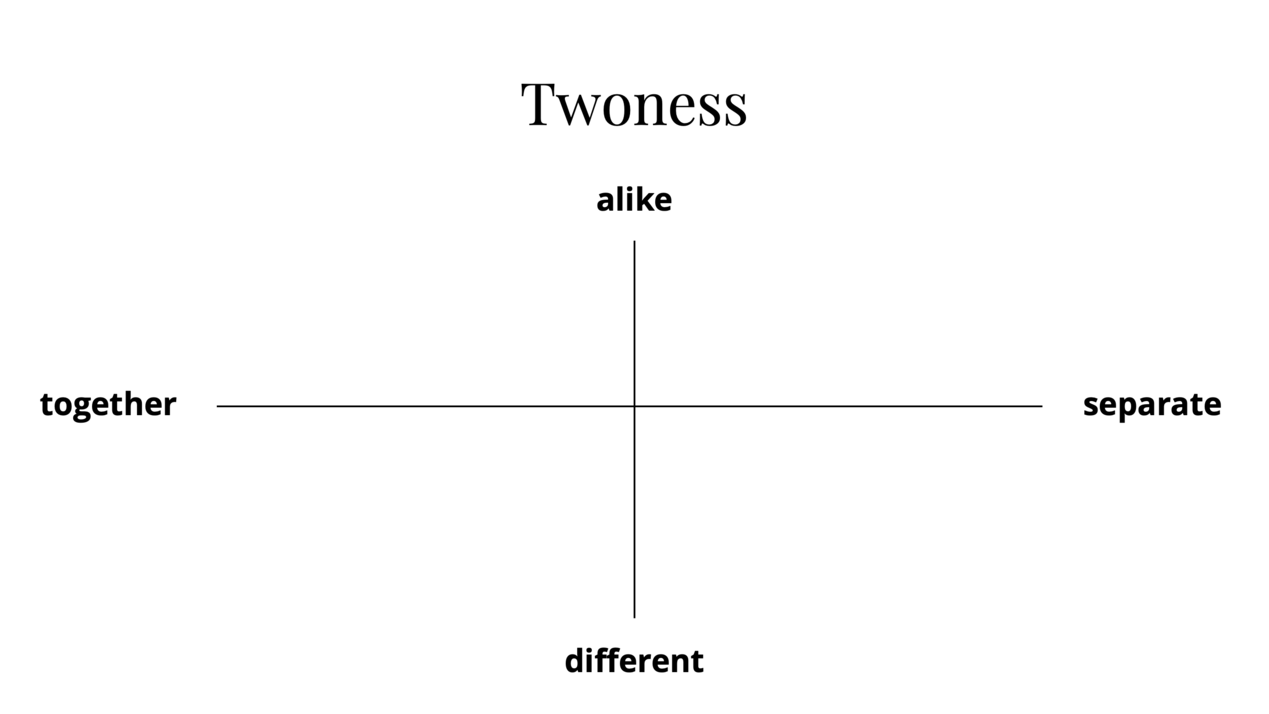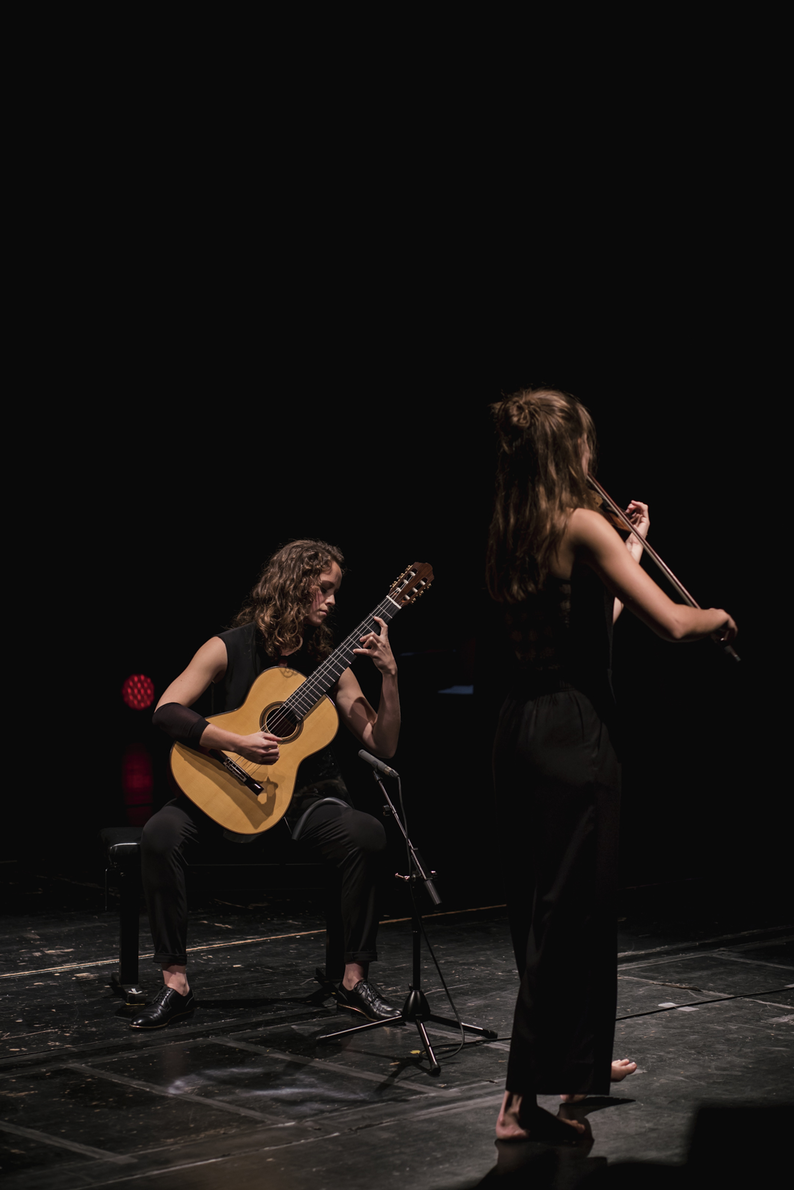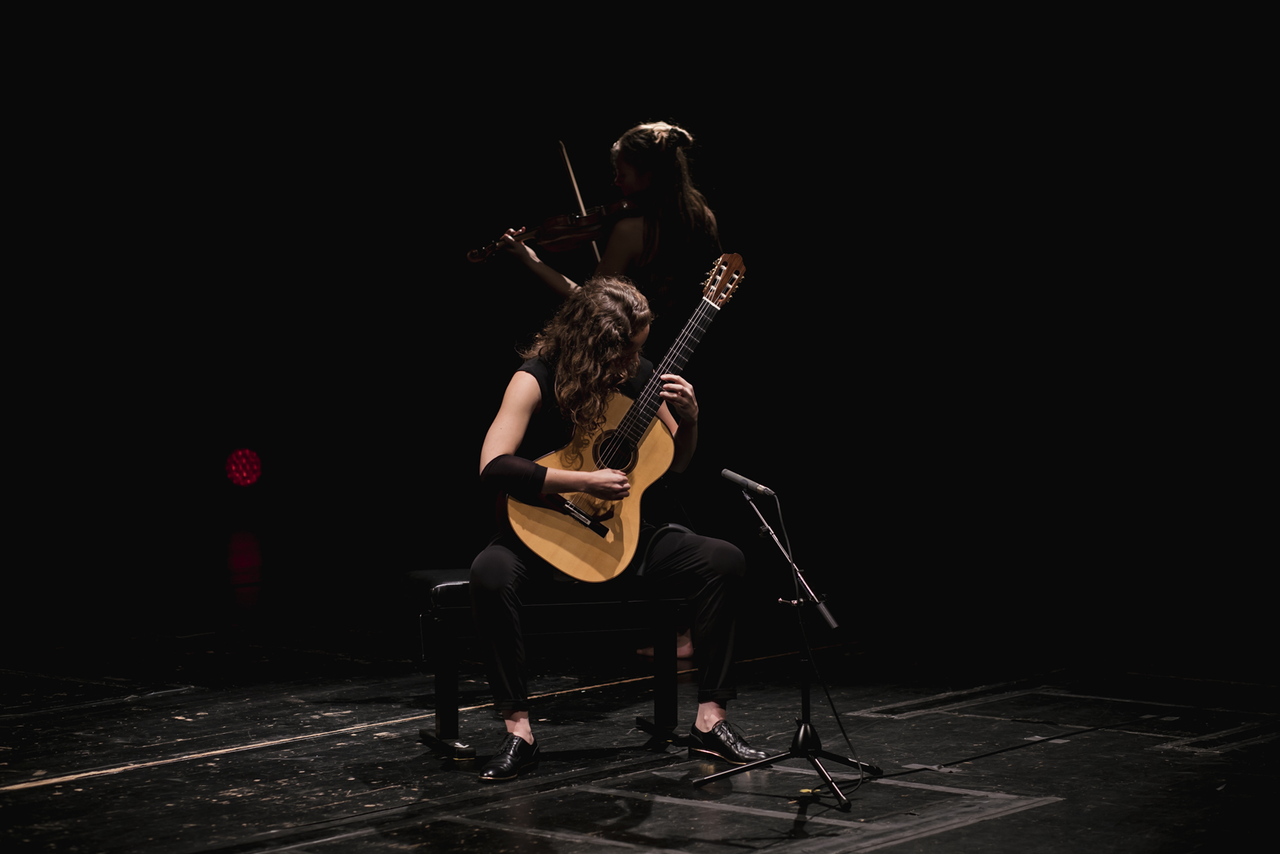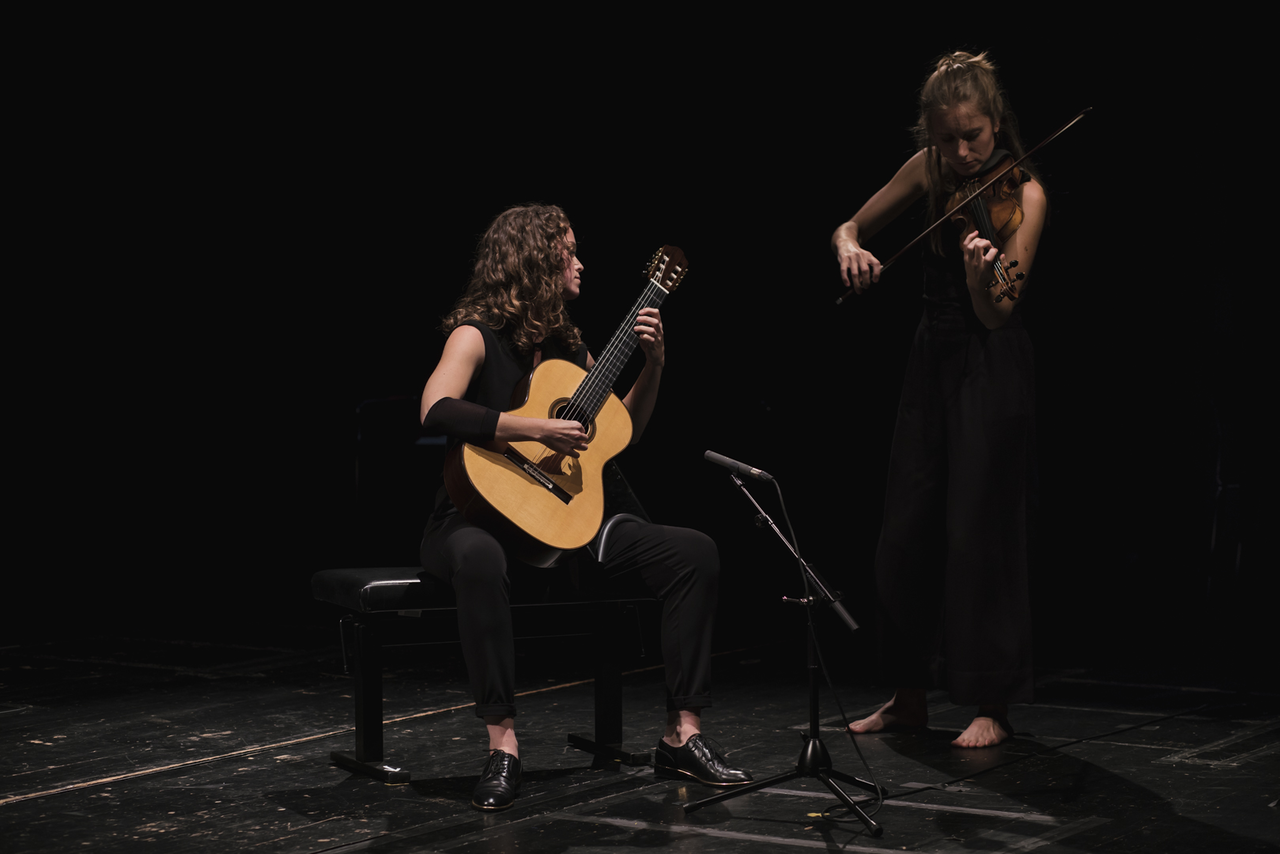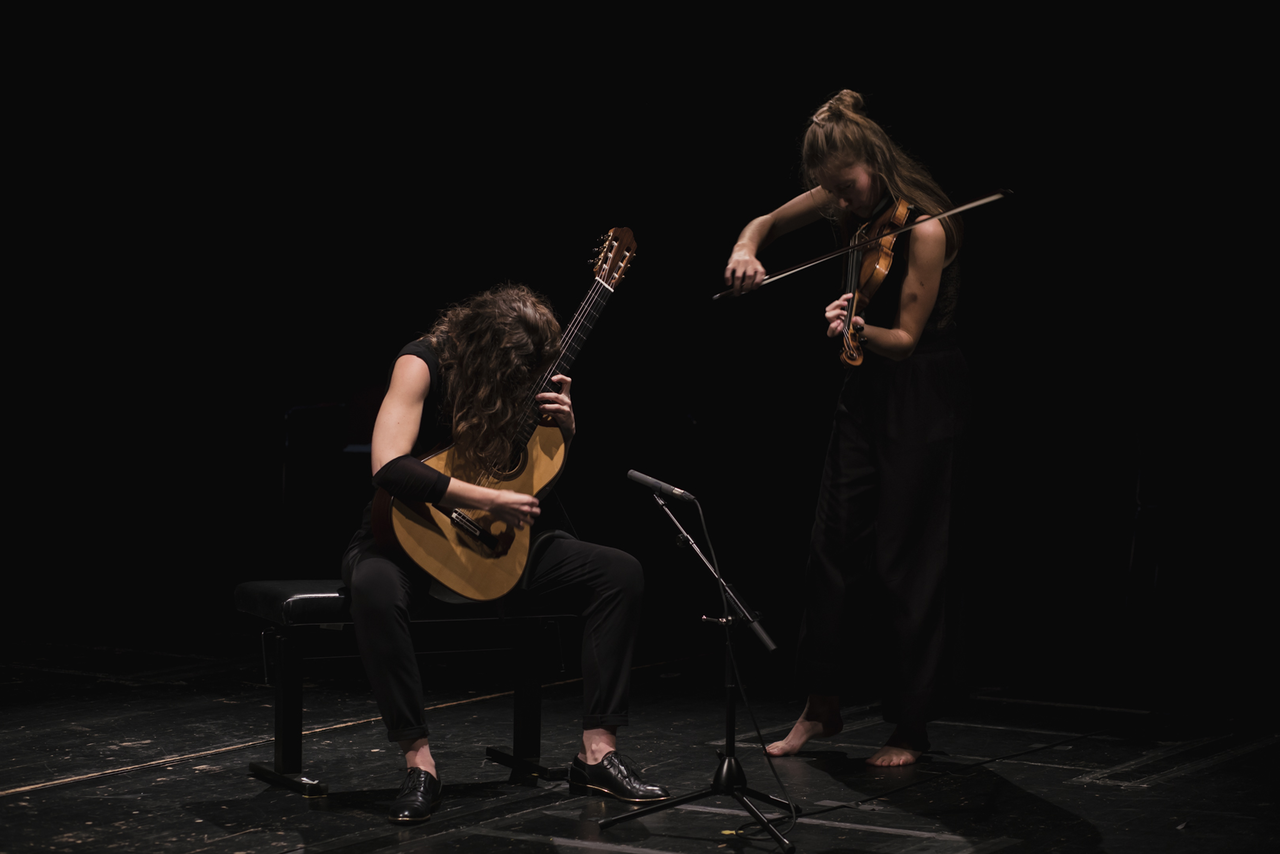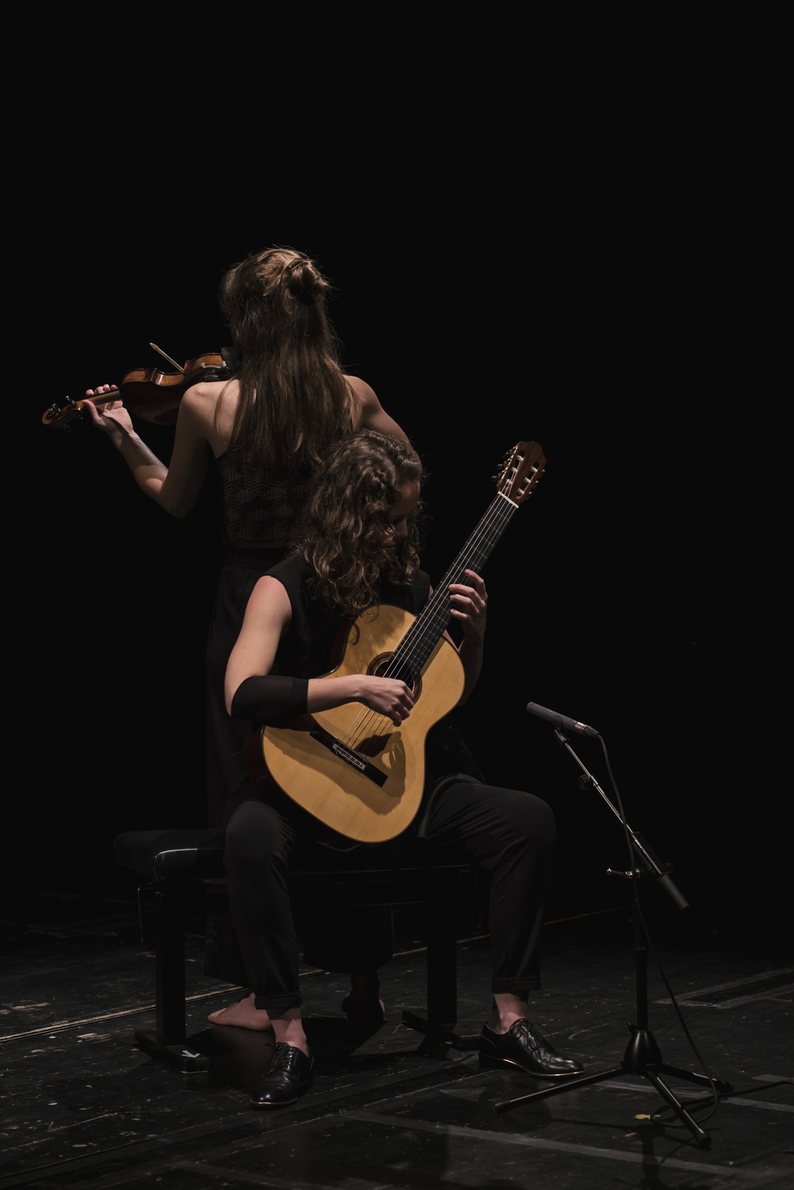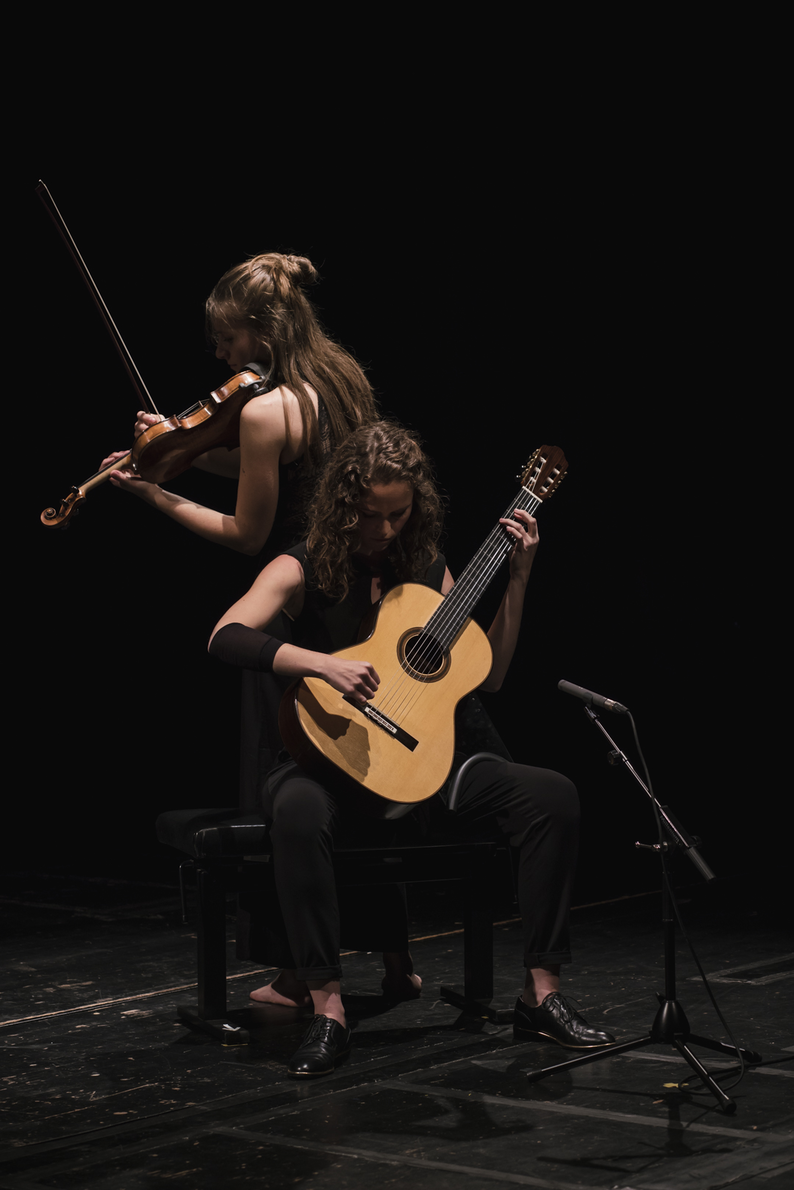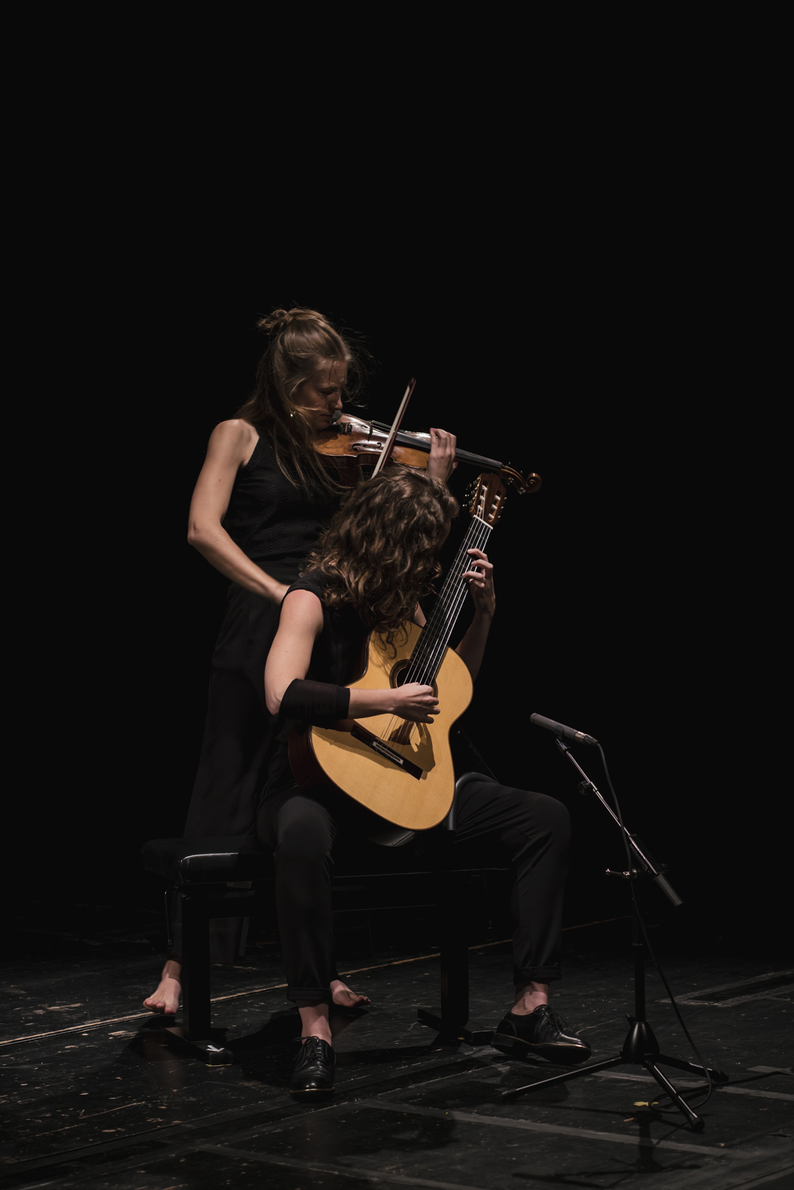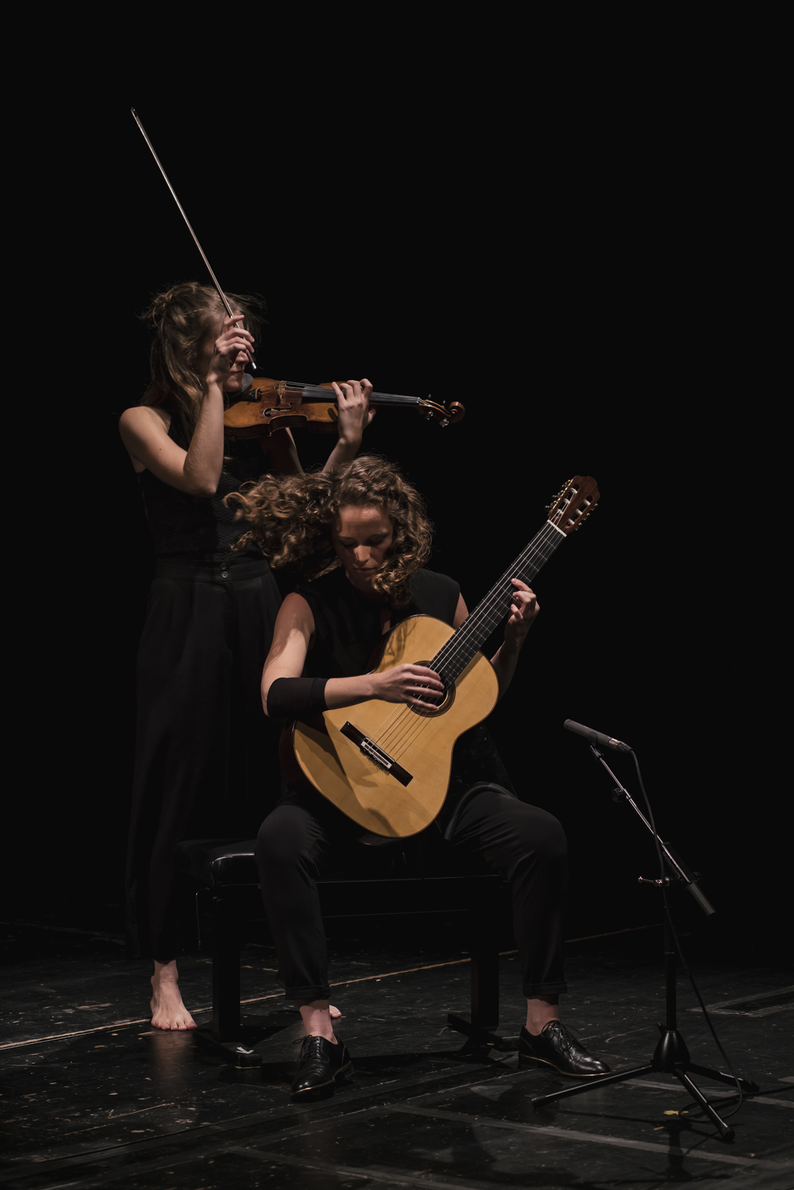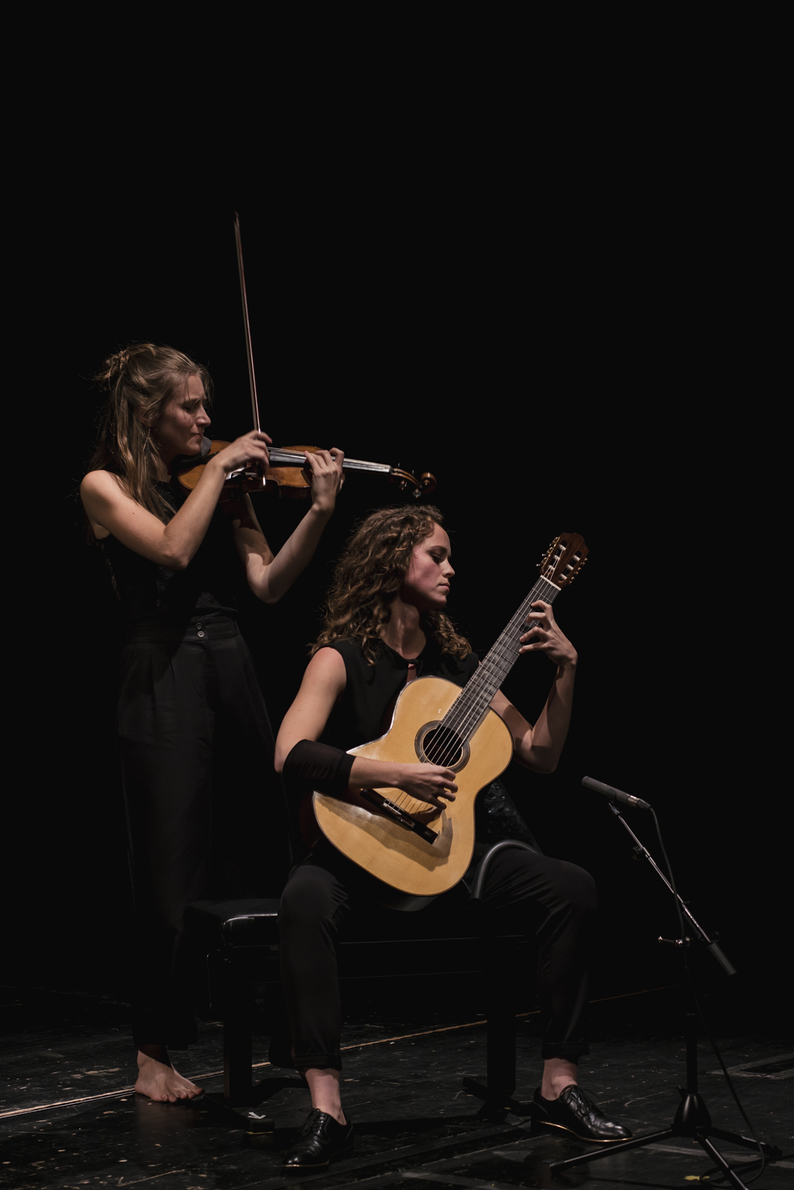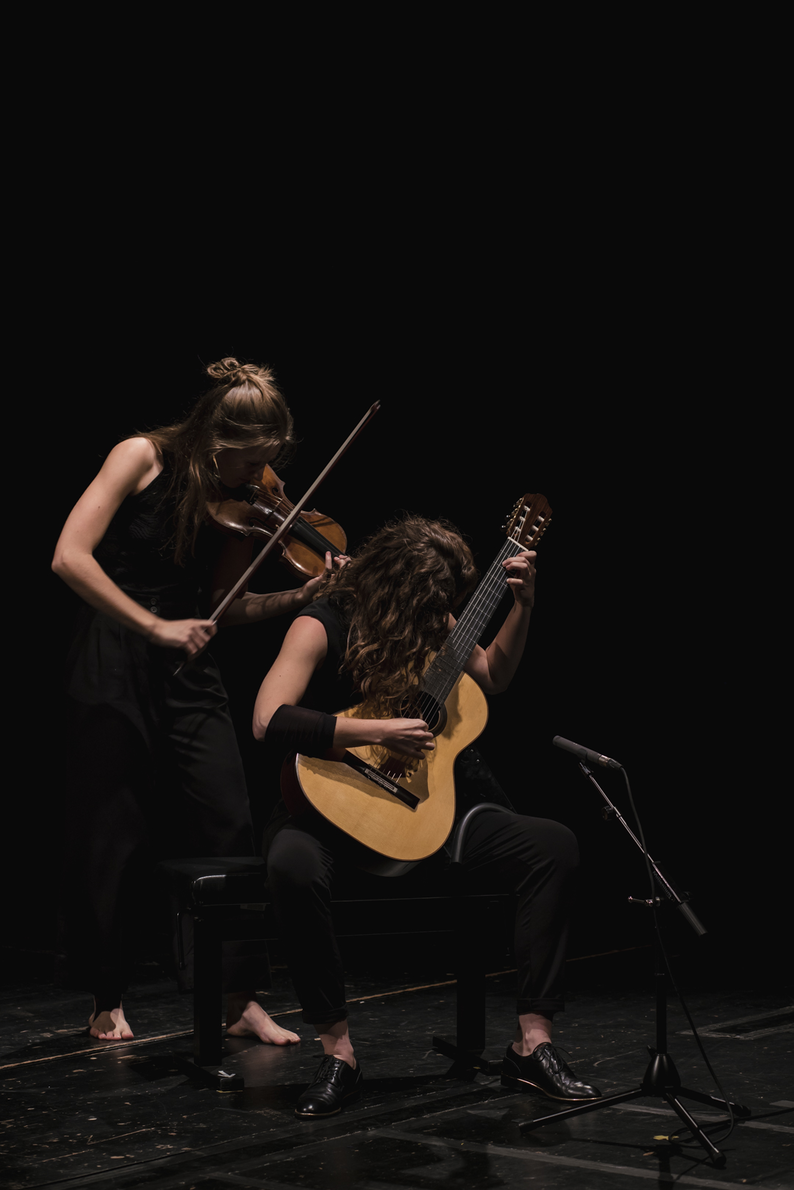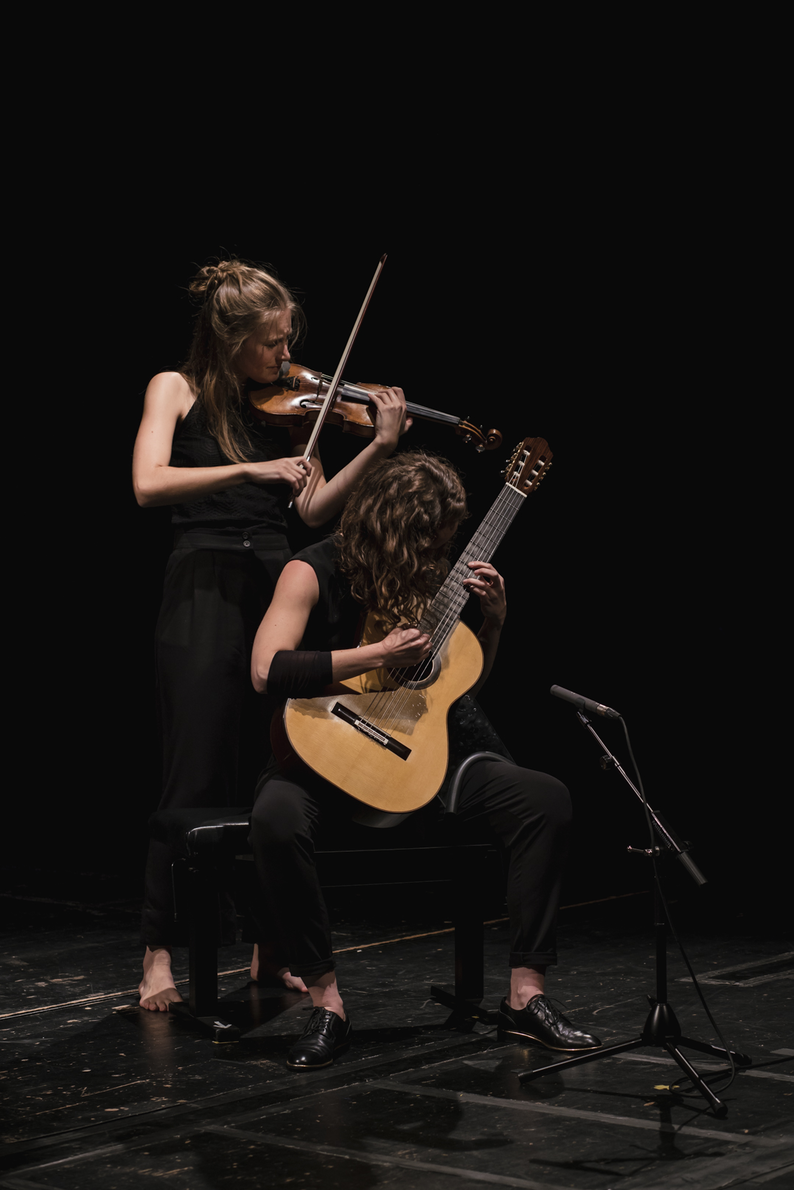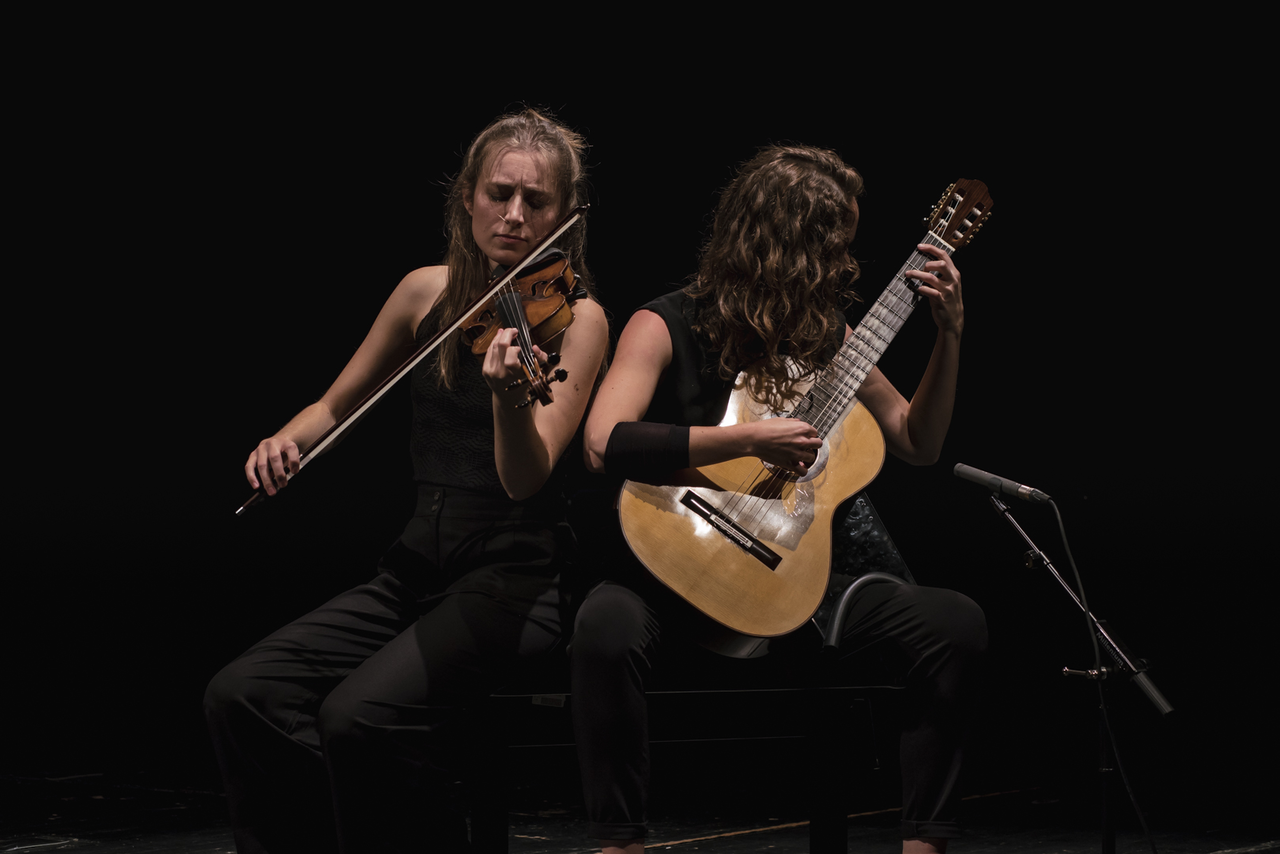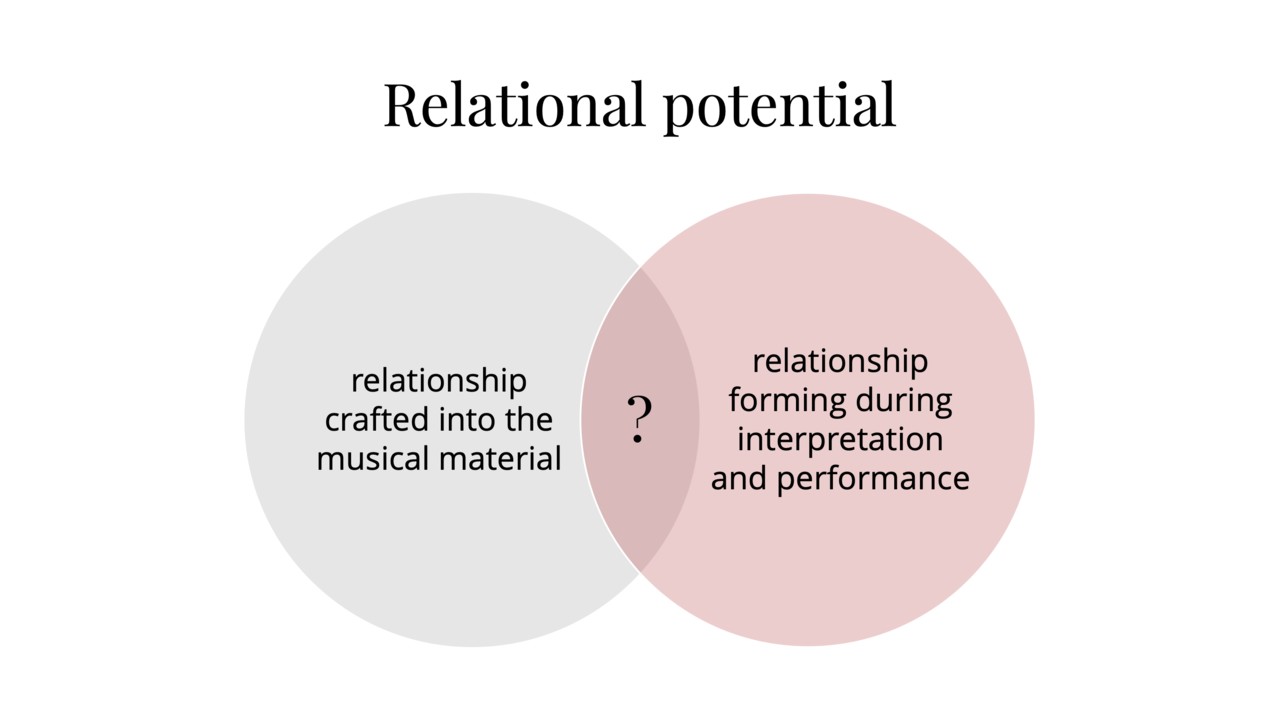The Musical Dyad - Crisis and Growth through Music
Music has the fundamental ability to open up spaces of intersubjectivity and social interaction. When two people engage in making music together, questions surrounding relationality arise: As a duo, the two individuals can musically act together in various ways, exploring the fundamental principle of twoness in its multiple forms. (fig. 1)
In fact, it is the wide range of relationality, from close attachment to the possibility of crisis, dissociation, or at least the struggle for togetherness, that unleashes the artistic potential.
Confronting a piece of music, the question of relationship is prompted by music itself, through structural aspects in the composition and musical events in the joint performance. To answer this question, relational qualities are negotiated through the process of interpretation. (fig. 2) However, interpersonal dynamics are also subject to external conditions of a performance. Together with the violinist Johanna Ruppert, I aim to explore how a developing interpersonal dynamic can be challenged and how it may respond to an audience that is made aware of the relational potential in the duo situation.
In an open rehearsal format, we experiment with choreographic elements and (extra-musical) objects that can facilitate interaction. This performative approach allows to shift the focus between different aspects of relation, such as connectivity, trust, resonance, fragility, embodiment or shared space. Drawing on the concept of musical empathy (Deniz Peters 2017) and joint feeling (Angelika Krebs 2015), this also entails questioning how an emotional state is shared between co-performers and how it is transferred to the listener, as well as how these empathetic processes can be induced or intensified, without construing an artificial narrative.
Together with the audience, we enter a live research situation: The audience is called upon interfering and interacting with us as a duo. This may be by moving through the room, (re-)positioning us and/or themselves or intervening with vocal statements. Objects such as threads, ties, hoops or clothes can be used as additional provocative means. Venturing into a state of crisis, our relationship is put to the test, only to give rise to new possibilities of relation, the chance to overcome dissociation and eventually to come out of this crisis - strengthened in our togetherness.
